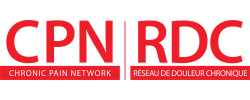| Return |
Patient Evidence Summary

Doctor, I have chronic sciatica. Is surgery a better option than nonsurgical treatments to relieve my symptoms?
In people who have sciatica for 4 to 12 months, surgery may provide better relief than nonsurgical treatments. However, most people in both groups improved over time.
What is the evidence?
SUMMARY OF FINDINGS
Surgery versus nonsurgical treatment for chronic sciatica due to lumbar disc herniation
Outcome | Surgeryb | Nonsurgical Treatmentc | Effect | ||
|---|---|---|---|---|---|
| Before | After | Before | After | ||
| Average score for leg pain intensitya at 6 months | 7.7 | 2.8 | 8.0 | 5.2 | People who had surgery had average pain scores that were 2.4 pointsd lower than people who did not have surgery |
Adverse events related to surgery at 1 year | 6% | 8% (of the 22 people who had surgery later) | No differencee in the number of people having surgery-related adverse events between the Surgery group and those who had surgery after failing the Nonsurgical Treatment group | ||
ascore ranges from 0 to 10 (higher score = more severe)
b8 people did not have surgery; 7 of these patients had their symptoms resolve before surgery could be performed
c22 patients went on to have surgery due to ongoing symptoms (2 out of the 22 had surgery before the end of study at 6 months)
dmost people would notice a 2-point difference in their symptoms
eAlthough the rates for the 2 groups look different, the differences were not statistically significant—this means that the difference could simply be due to chance rather than due to the different treatments.
What kind of study was this?
This was a randomized controlled trial (RCT).
Who? This study included 128 people (average age 38 years; 41% women) who had sciatica due to lumbar disc herniation (L4-L5 or L5-S1 level) for 4 to 12 months. All of the study participants were between 18 and 60 years of age with MRI evidence that nerve compression that was causing leg pain with or without numbness, tingling or weakness. People who were already receiving epidural injections or exercise-based physiotherapy or with a history of lower back surgery were excluded.
What? This study compared Surgery with Nonsurgical treatments for treatment of leg pain due to chronic sciatica caused by lumbar disc herniation.
Surgery | vs | Nonsurgical treatments |
|---|---|---|
Back surgery to remove the parts of the disc causing pressure on the nerve (within approximately 3 weeks of entering the study) One-night stay in hospital after surgery | Education on day-to-day functioning, activity, and exercise Pain medications Physiotherapy Epidural steroid injection (optional) |
Why was this research done?
About 90% of people who experience sciatica due to lumbar disc herniation will notice improvement in their symptoms within 4 months without surgical treatment. The researchers in this study wanted to know if people who have chronic sciatica (symptoms for 4 to 12 months) benefit more from surgery or nonsurgical treatments. The results showed that both groups of people improved over time, but the Surgery group had greater improvement. Concerns about this study include that it only enrolled people who were symptomatic enough to be referred for surgery in the first place, that it was only done at one clinical site, and people in the Surgery group were not receiving exercise-based physiotherapy (which may have been helpful).
This Evidence Summary is based on the following article:
Bailey CS, Rasoulinejad P, Taylor D, et al. Surgery versus Conservative Care for Persistent Sciatica Lasting 4 to 12 Months. N Engl J Med. 2020 Mar 19;382(12):1093-1102. doi: 10.1056/NEJMoa1912658. PubMed
Published: Thursday, December 31, 2020
Last Updated: Tuesday, July 13, 2021
Please note that the information contained herein is not to be interpreted as an alternative to medical advice from a professional healthcare provider. If you have any questions about any medical matter, you should consult your professional healthcare providers, and should never delay seeking medical advice, disregard medical advice or discontinue medication based on information provided here.
|
This Evidence Summary was printed from the PAIN+ CPN website on 2025/04/25. To view other Evidence Summaries or to register to receive email notifications about new Evidence Summaries, please visit us at https://www.painpluscpn.ca/Articles/EvidenceSummaries |

|






 , McMaster University
, McMaster University